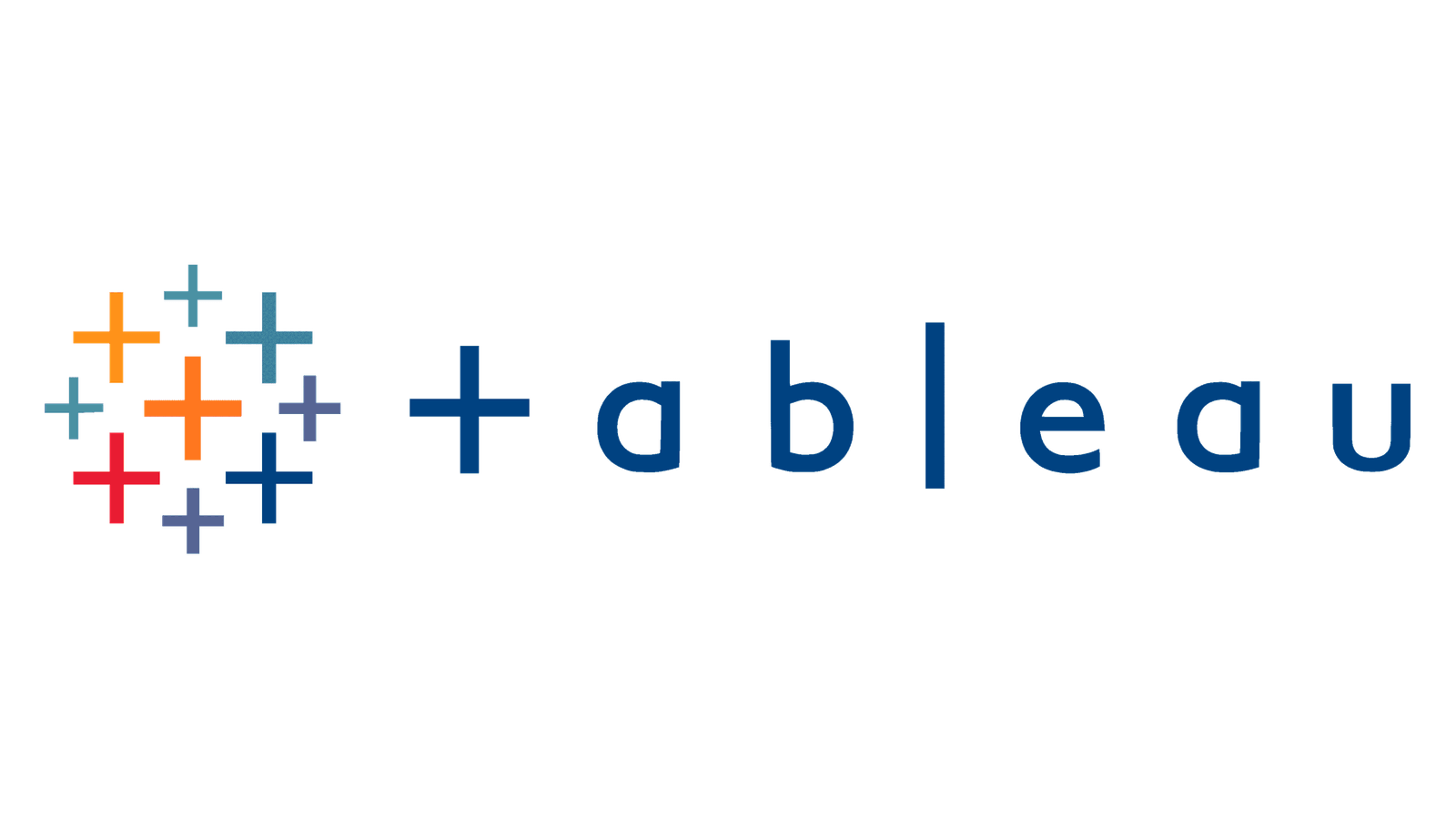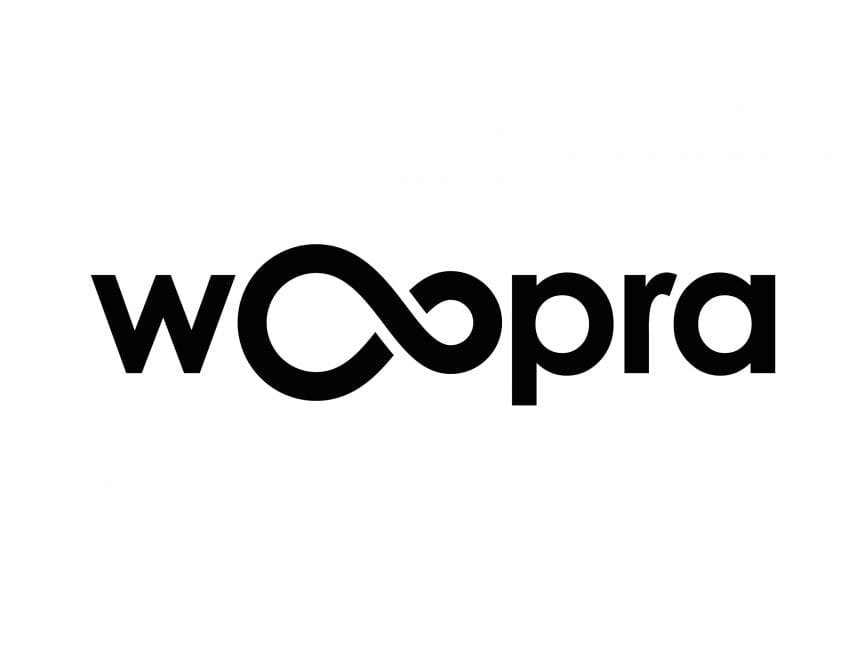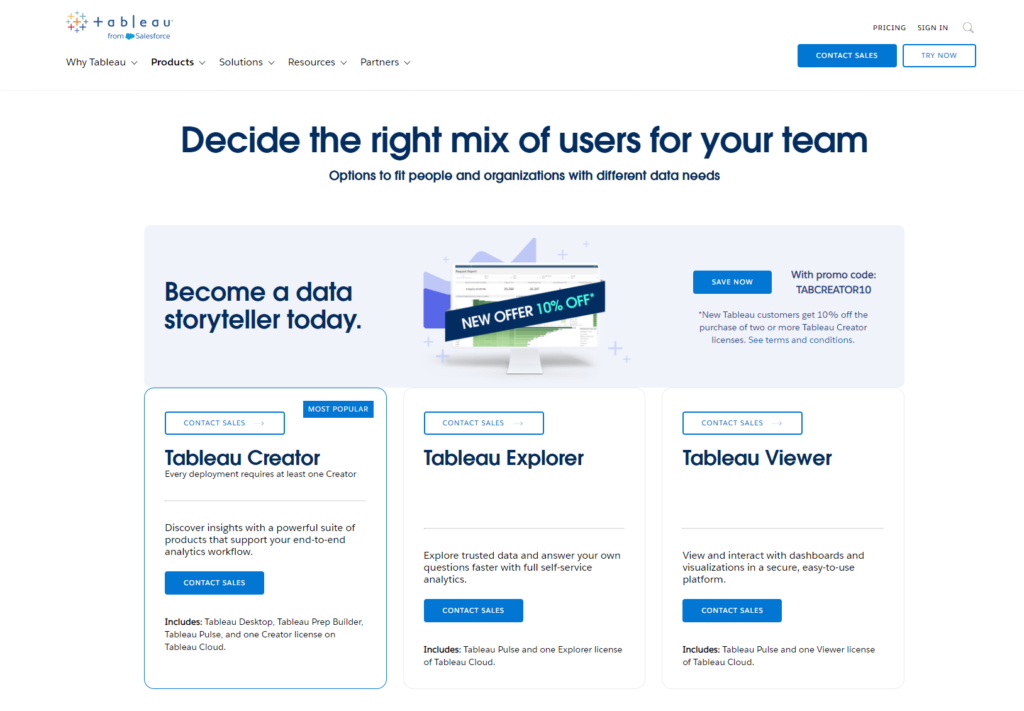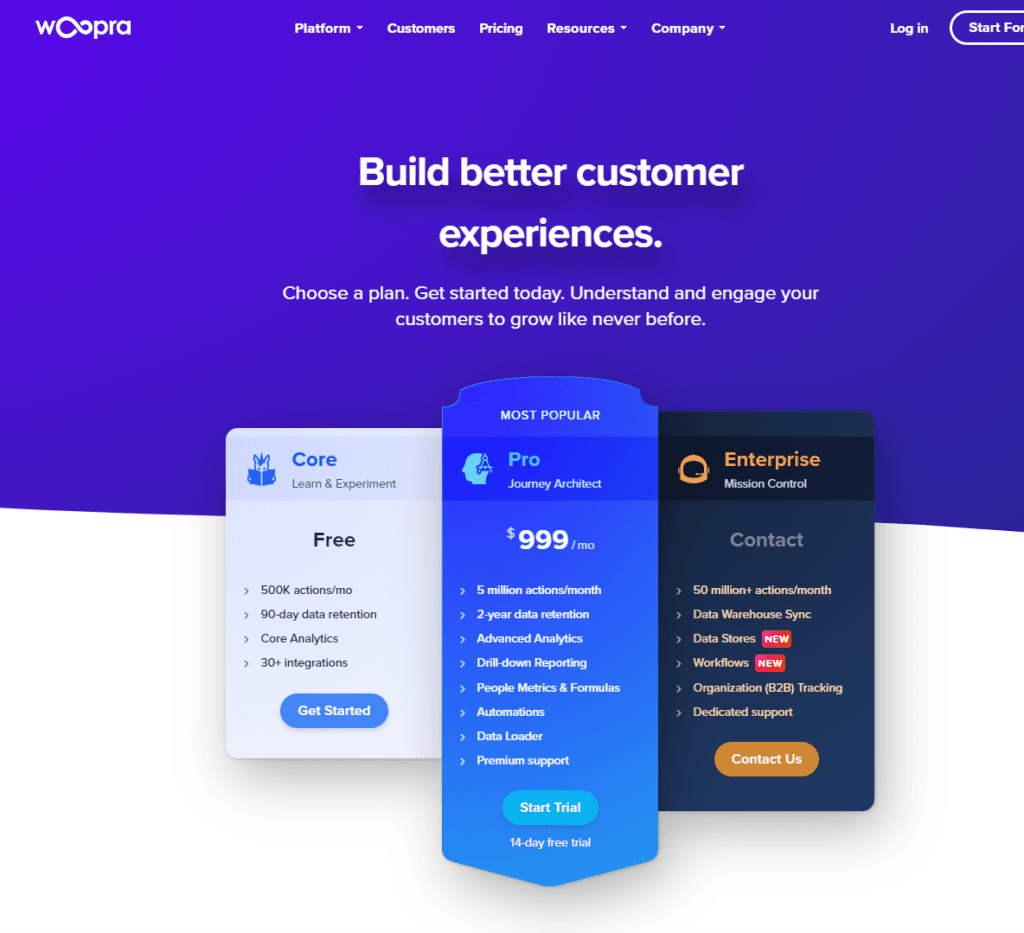In today’s data-driven landscape, the power of analytics tools transcends mere data collection, venturing into the realm of insightful visualization and dynamic interaction. This is where Tableau and Woopra, two giants in the analytics field, come into play. Both platforms offer unique strengths, but how do they compare when it comes to transforming complex datasets into comprehensible, actionable insights? Let’s dive into the world of data visualization and dashboard customization to see which tool might be the best fit for your business needs.
Tableau | Woopra |
|---|---|
| G2 Score – 4.4 out of 5 stars | G2 Score – 4.4 out of 5 stars |
| TrustRadius Score – 8.2/10 | TrustRadius Score – 5.8/10 |
Data Visualization and Dashboard Customization
At the core of any analytics tool is its ability to not just gather data but to present it in a way that’s both understandable and actionable. The manner in which data is visualized and how dashboards can be customized to suit specific analytical needs are pivotal in choosing the right platform.
Tableau: A Leader in Data Visualization
Tableau stands out as a leader in the data visualization space, renowned for its powerful and flexible visualization capabilities. It allows users to create a wide range of visualizations from simple charts to complex interactive dashboards. Tableau’s strength lies in its ability to handle vast amounts of data, transforming them into visually appealing and easy-to-understand representations. Its drag-and-drop interface caters to users of all skill levels, enabling both data scientists and business users to explore and discover insights without needing to write a single line of code. Dashboard customization in Tableau is highly intuitive, allowing for a deep level of personalization and the ability to embed interactive dashboards into websites or share them across teams.
Woopra: Focused on Real-time Customer Analytics
While Woopra may not offer the same breadth of visualization types as Tableau, it provides powerful real-time analytics focused on customer behavior and journey analytics. Woopra’s dashboards are designed to give businesses a clear view of their customer’s interactions across various touchpoints, offering pre-built and custom widgets to track specific metrics related to customer engagement and conversion. The platform excels in presenting a cohesive view of the customer journey, making it easier for businesses to understand how users interact with their product or service. Woopra’s dashboard customization allows for the tailoring of analytics views to focus on key performance indicators (KPIs) that matter most, ensuring that businesses can quickly act on the insights generated.
Ease of Use and Learning Curve
For businesses investing in analytics tools, the ease of adoption and the learning curve associated with these platforms are critical factors. These elements determine not just the speed at which the tool can be implemented but also the breadth of its adoption across different teams within an organization.
Tableau: Powerful but Complex
Tableau is renowned for its comprehensive data visualization capabilities, which come with a certain level of complexity. New users might find the array of features and options a bit daunting at first. However, Tableau has invested heavily in educational resources, including a vast library of tutorials, guides, and a community forum to help users climb the learning curve. For organizations that can dedicate time and resources to training, Tableau becomes an incredibly powerful tool, enabling deep data exploration and analysis. The platform is designed to cater to users with varying levels of expertise, from data analysts to business users, but maximizing its potential does require a commitment to learning.
Woopra: Intuitive Design Focused on User Experience
Woopra, on the other hand, places a strong emphasis on user experience and simplicity. Its interface is designed to be intuitive, making it easier for new users to navigate and start obtaining insights quickly. This focus on ease of use does not mean Woopra lacks depth; rather, it ensures that users can leverage its customer analytics capabilities without a steep learning curve. Woopra’s approach is particularly beneficial for marketing teams, customer experience managers, and product teams who need to understand customer behavior and make data-driven decisions rapidly. The platform offers a range of documentation and support to help users maximize their use of the tool, but the barrier to entry is significantly lower than more complex systems.
Collaboration and Sharing Features
In an increasingly connected work environment, the ability of analytics tools to facilitate collaboration among team members and share insights across departments is essential for driving unified strategies and actions. Effective collaboration tools within an analytics platform can significantly enhance the way teams work together on data-driven projects. Sharing features not only streamline the dissemination of insights but also ensure that decision-making is based on a shared understanding of the data.
Tableau: Robust Collaboration for Data-Driven Teams
Tableau excels in providing robust collaboration and sharing features, designed to empower teams to work together seamlessly on data visualization projects. Its platform includes options for sharing dashboards and visualizations across the organization through Tableau Server or Tableau Online, facilitating access to insights regardless of physical location. Additionally, Tableau’s commenting and discussion features enable team members to communicate directly within the context of specific data visualizations, enhancing the collaborative process. This focus on collaborative analytics makes Tableau a powerful tool for organizations where cross-departmental data insights drive strategic decisions.
Woopra: Streamlined Sharing for Customer Insights
Woopra offers streamlined collaboration features with a focus on sharing customer insights efficiently. The platform allows teams to create and share reports and dashboards that highlight key aspects of the customer journey and behavior. While Woopra’s collaboration features may not be as extensive as Tableau’s, they are intuitively designed to meet the needs of teams focused on customer analytics. Sharing options enable quick dissemination of insights, ensuring that all relevant stakeholders can access the data they need to inform customer engagement strategies. Woopra’s approach to collaboration emphasizes simplicity and effectiveness, catering to businesses that prioritize agility and the ability to act quickly on customer insights.

Related: Check out our free SEO suite

Integration Capabilities
In today’s interconnected digital ecosystem, the ability of an analytics platform to seamlessly integrate with other software and services is pivotal. It not only enhances the flow of data across tools but also enriches the insights that can be derived by aggregating diverse data sources. A robust analytics tool should offer versatile integration options, allowing businesses to connect with various data sources, applications, and services. This capability ensures that organizations can construct a holistic view of their operations, customer behaviors, and market trends by leveraging data from across their digital landscape.
Tableau: Extensive Data Connectivity
Tableau is celebrated for its extensive data connectivity options, providing businesses with the flexibility to integrate with a wide array of data sources, including cloud databases, spreadsheets, SQL databases, and even big data platforms. This vast range of integration capabilities enables organizations to aggregate and visualize data from multiple sources, offering a comprehensive analytics experience. Tableau’s strength in data integration makes it an ideal choice for enterprises that rely on a diverse set of tools and platforms, as it can serve as a central hub for all their data analysis needs. The platform’s advanced data blending features further allow users to combine different data sets for deeper insights, making it a powerful tool for data-driven decision-making.
Woopra: Focused Integrations for Customer Data
While Woopra may not match Tableau in terms of the breadth of data sources it can directly connect with, it offers focused integrations tailored towards tracking customer interactions across various touchpoints. Woopra specializes in integrating with CRM systems, email marketing platforms, customer support tools, and more, enabling businesses to construct a detailed view of the customer journey. This focused approach allows organizations to understand customer behavior and preferences deeply, facilitating personalized marketing strategies and improved customer experiences. Woopra’s integrations are designed to be straightforward, minimizing the technical barriers to setting up comprehensive customer analytics.
Real-Time Data Processing and Analysis
In an era where speed can differentiate between success and missed opportunities, the capability of an analytics platform to process and analyze data in real time is invaluable. This feature allows businesses to make agile decisions based on the latest information, adapting quickly to market changes and customer behaviors.
Tableau: Batch and Near Real-Time Analysis
Tableau excels in handling large datasets and offers capabilities for near real-time data analysis through its data refresh features and live connection options to databases. While it may not provide instant real-time data processing for every type of data source, its robust infrastructure supports frequent updates, ensuring that businesses have access to up-to-date information for their analysis. This makes Tableau a powerful tool for scenarios where near real-time insights are sufficient to guide decision-making, offering a balance between comprehensive data analysis and timely insights.
Woopra: Emphasis on Real-Time Customer Analytics
Woopra, focusing on customer analytics, prioritizes real-time data processing to track customer actions as they happen. This capability is particularly beneficial for monitoring customer journeys, engagement, and interactions across websites and applications. The platform’s real-time analytics allow businesses to observe the immediate impact of marketing campaigns, website changes, or new product launches, enabling rapid adjustments based on customer responses. For organizations that rely on up-to-the-minute data to optimize customer experiences, Woopra provides the necessary tools to act swiftly on fresh insights.
Scalability and Performance
As businesses grow, their data analytics tools must be able to scale accordingly, not only in handling larger volumes of data but also in maintaining performance and providing timely insights. The scalability of an analytics platform is critical for businesses planning for growth. It ensures that as data volume increases, the tool can continue to deliver insights efficiently without compromising on speed or usability. Performance, closely tied to scalability, affects how quickly data can be processed and visualized, impacting decision-making speed.
Tableau: Built for Scale and Speed
Tableau is designed with enterprise-scale analytics in mind. It can handle massive datasets with ease, making it an excellent choice for large organizations or those with significant data analysis needs. Tableau’s performance is optimized for speed, ensuring that even complex visualizations and dashboards load quickly and updates occur in near real-time. This capacity for handling large-scale data operations without sacrificing performance makes Tableau a reliable choice for businesses that anticipate growth in their data analytics requirements. Its robust infrastructure supports concurrent users and queries, ensuring that insights remain accessible even as demand increases.
Woopra: Agile and Efficient for Real-time Insights
Woopra, while also scalable, focuses on providing real-time analytics with an emphasis on customer data. Its performance is tailored to ensure that businesses can track customer interactions as they happen, making it possible to act on insights promptly. Woopra’s scalability is particularly suited to growing businesses that prioritize agility and the ability to adapt quickly based on customer behavior insights. It efficiently processes data to maintain performance, ensuring that dashboards and reports remain up-to-date without significant delays. Woopra’s architecture is designed to grow with your business, ensuring that data insights remain timely and relevant, regardless of the volume of customer interactions being tracked.
Pricing
Tableau:

Woopra:

Conclusion
In concluding the comparison between Tableau and Woopra, we’ve navigated through various pivotal aspects that differentiate these powerful analytics tools. Each platform offers unique strengths tailored to meet specific business needs, from data visualization and dashboard customization to integration capabilities, scalability, performance, and collaboration features.
Tableau stands out as a comprehensive analytics solution renowned for its robust data visualization capabilities, extensive integration options, and powerful scalability. It’s particularly suited for organizations that rely on detailed data analysis across multiple departments and require a platform that can handle complex visualizations and large datasets. Tableau’s strong collaboration and sharing features further enhance its appeal to larger teams, enabling seamless communication and data-driven decision-making processes.
Woopra, on the other hand, focuses on providing real-time customer analytics with an emphasis on understanding customer behavior and optimizing the customer journey. Its intuitive design and ease of use make it accessible for teams of all technical levels, while its focused integration capabilities ensure that customer data is easily consolidated and actionable. Woopra’s streamlined collaboration features support quick sharing of insights, making it an excellent choice for businesses prioritizing agility and rapid response to customer interactions.
Read Next:
- GetResponse vs Zoho Campaigns: The Best Email Marketing Tool for 2024
- AWeber vs ActiveCampaign: The Best Email Marketing Tool
- Constant Contact vs Campaigner: Best Email Marketing Tool
- GetResponse vs Omnisend: The Best Email Marketing Tool for 2024
- AWeber vs Benchmark Email: The Best Email Marketing Tool






















Comments are closed.